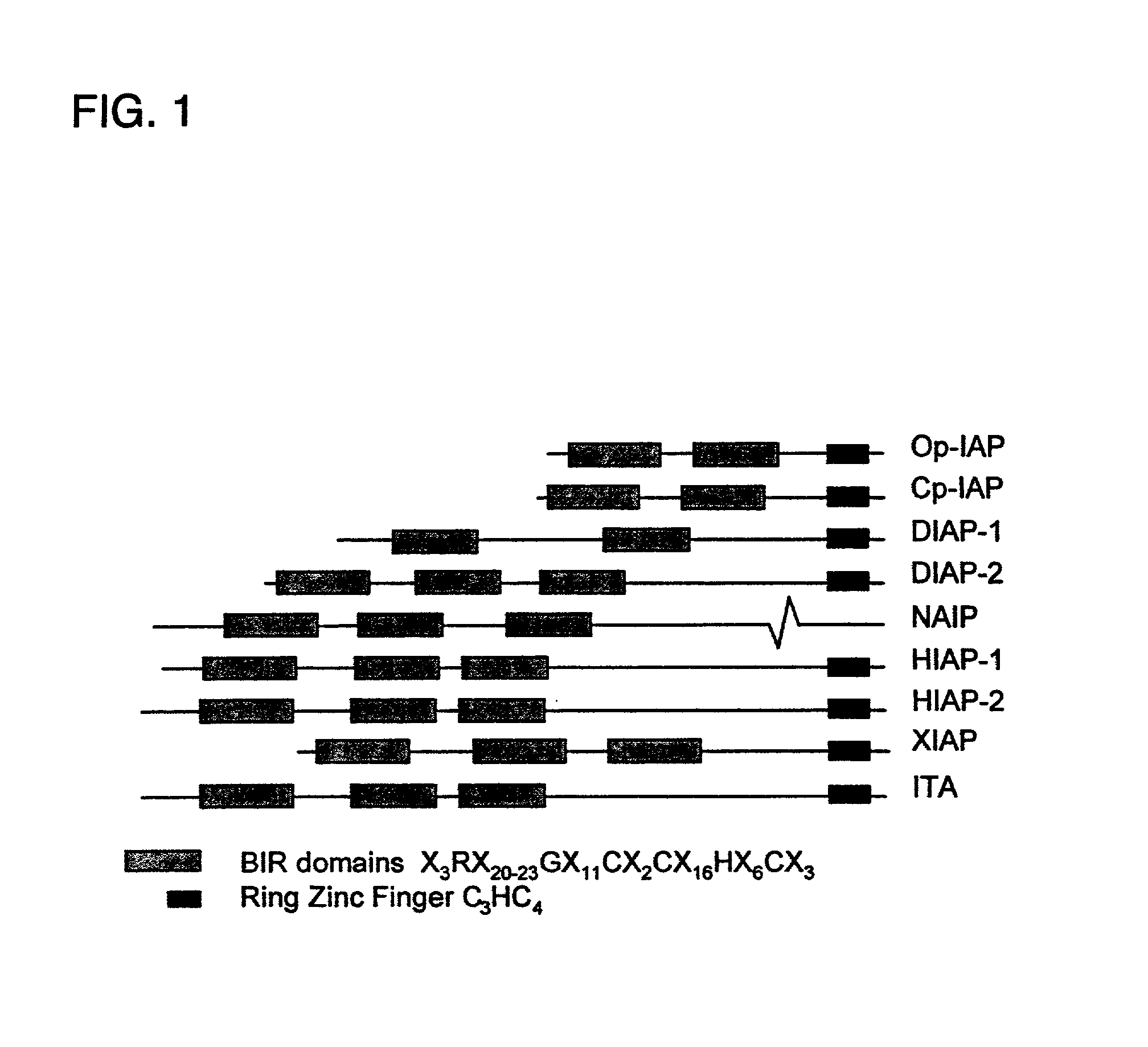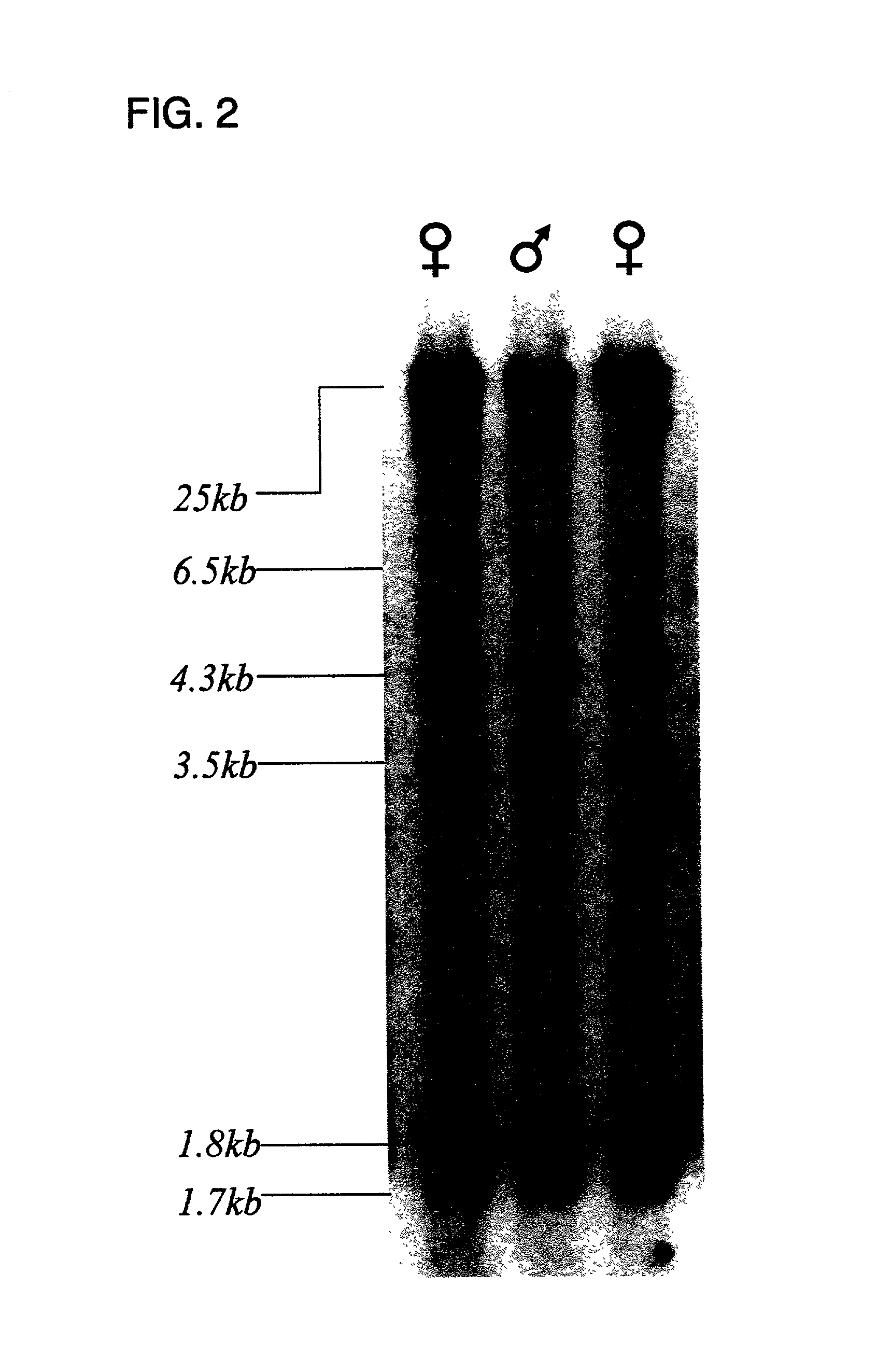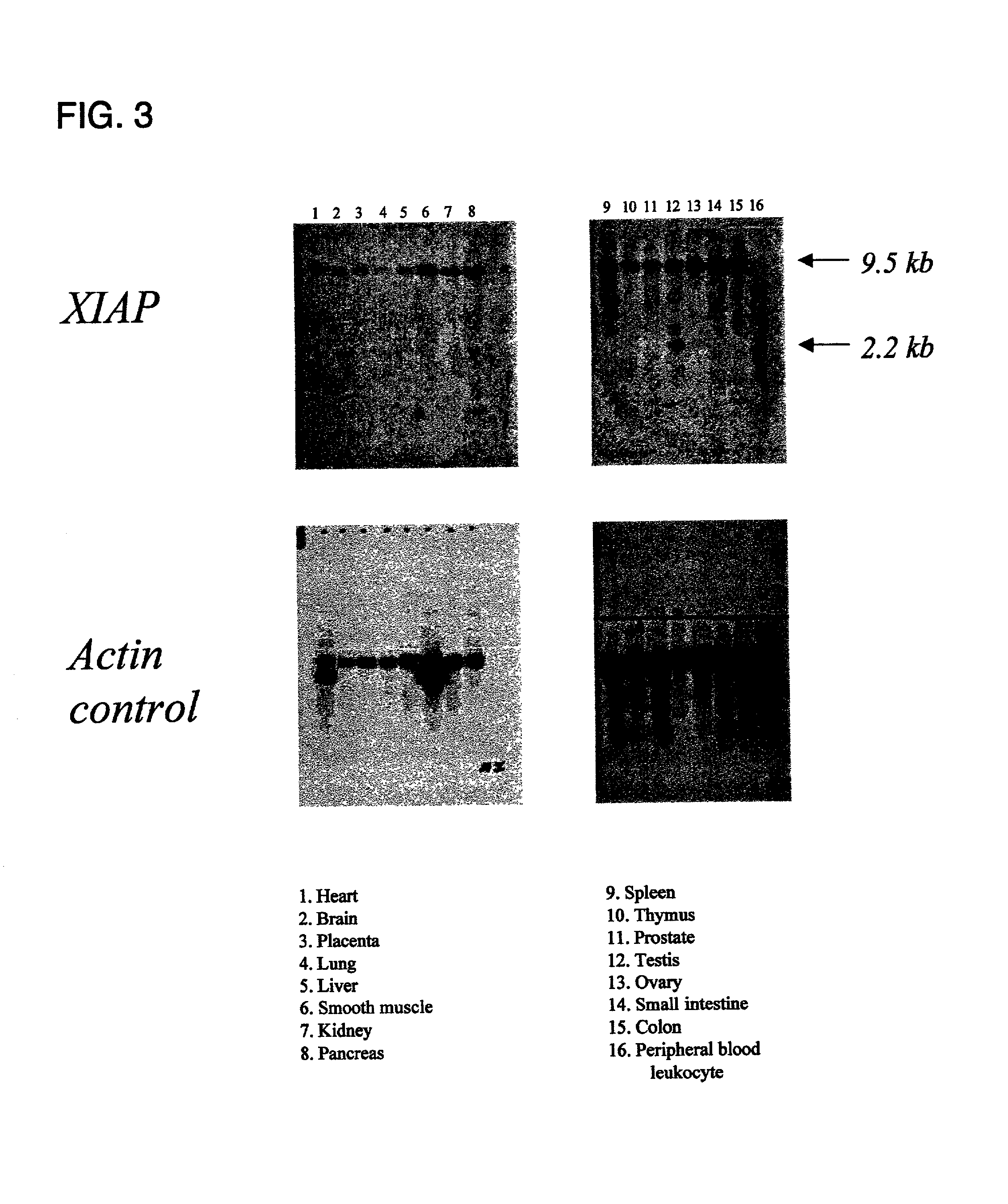Methods and compounds for modulating male fertility
a technology of apoptosis and cell, applied in the field of cell involvement in fertility, can solve the problems of reducing male fertility, many of these are lower efficiency, and interfere with the processing/transport/translation and/or stability of the target tiap mrna
- Summary
- Abstract
- Description
- Claims
- Application Information
AI Technical Summary
Problems solved by technology
Method used
Image
Examples
example ii
The TIAP Gene
[0173] Southern blotting analysis of genomic phage clone DNA was used to generate phage contigs and a restriction map of the XIAP locus. Five distinct loci were isolated, with XIAP-reactive EcoRI fragments corresponding to all six bands seen on the Southern blot of genomic DNA. The largest locus (containing the 25 kb and 3.5 kb bands on the Southern blot) was determined to contain the functional X-linked XIAP gene based on sequence from coding region primers and probing with different coding region and UTR probes. The remaining four loci were analysed to a lesser extent. The results of this analysis are shown in Table II
2TABLE II Genomic EcoRI fragment size Identity Reasoning 25 kb xiap promoter through BIR2 Sequence analysis. 6.5 kb pseudogene Weakly hybridizes with BIR1 of xiap but nothing else. 4.3 kb pseudogene (likely an Sequencing showed homology with xiap from incomplete, reverse 3'UTR up to BIR2 at which point the homology transcribed copy of xiap). ended. There...
example iii
TIAP cDNA
[0174] On a human multiple tissue northern (MTN) blot of poly-A.sup.+ RNA, a 9.5 kb XIAP-reactive band appeared to be ubiquitously expressed in all tissues tested with minor variations in intensity. Of note, however, was a second band of approximately 2 kb in size that appeared only in the testes. To investigate the possibility of a second form of XIAP expressed in the testes, a human testes cDNA library was screened with full length XIAP coding region probe. Interestingly, several clones isolated bore only 75-85% similarity with existing XIAP cDNA sequence. Overlapping clones from this testes specific cDNA were sequenced and compared with the XIAP sequence. Sequencing of the 2 kb band (FIG. 4A) indicates it potentially encodes a protein similar to XIAP (.+-.80% identity; 90% similarity) that contains one BIR domain (corresponding to the third BIR domain of XIAP) and a carboxyl terminal RING zinc finger (FIG. 4B). Shown in FIG. 5 is a schematic diagram showing the compariso...
example iv
Significance of TIAP
[0176] During and following meiosis of a spermatocyte, the X chromosome is inactivated (Richler et al., Nature Genetics 2: 192, 1992; Salido et al., Nature Genetics 2: 196, 1992). Thus, there must be some mechanism for X-linked genes required for the survival of the spermatocyte to evade inactivation. X-linked genes that are essential to the proper function of cells often have a duplicate copy present on an autosome and expressed specifically in the testes (e.g., PGK: Bluthmann et al., EMBO J. 1: 479, 1982; G6pd: Hendriksen et al., Genomics 41: 350, 1997; PDHA: Iannello et al., Reprod Fertil Dev 7: 705, 1995; PRPS: Taira et al., J. Biol Chem. 265: 16491, 1990; GKD: Sargent et al, Hum. Mol. Genet. 3: 1317, 1994). This duplicate copy is often present as an intronless gene whose expression is limited to cells of a germ-line origin. XIAP is a ubiquitously expressed anti-apoptotic protein and could very well have biological activity required for normal cell survival. ...
PUM
| Property | Measurement | Unit |
|---|---|---|
| Fraction | aaaaa | aaaaa |
| Fraction | aaaaa | aaaaa |
| Biological properties | aaaaa | aaaaa |
Abstract
Description
Claims
Application Information
 Login to View More
Login to View More - R&D
- Intellectual Property
- Life Sciences
- Materials
- Tech Scout
- Unparalleled Data Quality
- Higher Quality Content
- 60% Fewer Hallucinations
Browse by: Latest US Patents, China's latest patents, Technical Efficacy Thesaurus, Application Domain, Technology Topic, Popular Technical Reports.
© 2025 PatSnap. All rights reserved.Legal|Privacy policy|Modern Slavery Act Transparency Statement|Sitemap|About US| Contact US: help@patsnap.com



